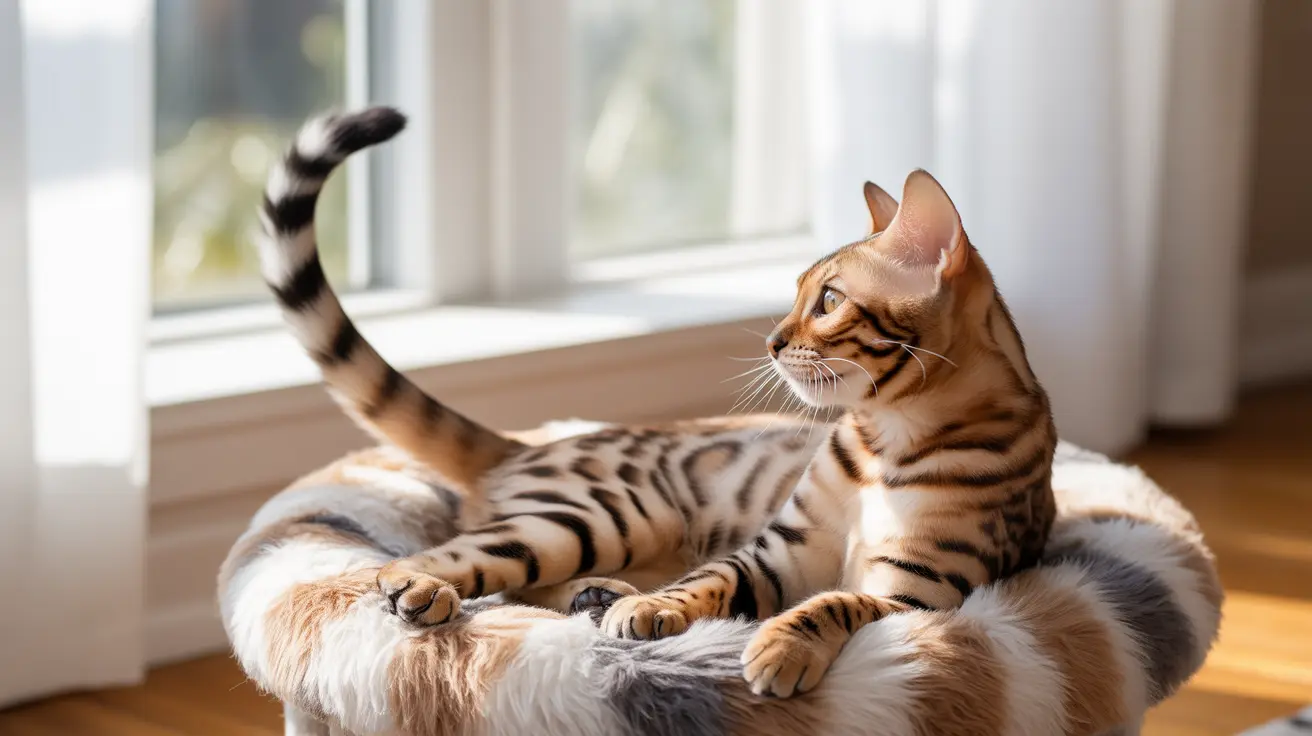When your cat suddenly develops a limp tail, it can be concerning for any pet owner. This condition, where the tail hangs limply or drags on the ground, often signals an underlying health issue that requires attention. Understanding the causes, recognizing symptoms, and knowing when to seek veterinary care are crucial for your cat's wellbeing.
A cat's tail is an extension of their spine, containing important nerves that control not only tail movement but also crucial bodily functions. When injury or illness affects the tail, it can impact your cat's quality of life and potentially lead to more serious complications if left untreated.
Common Causes of Cat Limp Tail
Several factors can lead to a limp tail condition in cats:
Physical Trauma
- Tail getting caught in doors or windows
- Being stepped on or pulled
- Car accidents or falls
- Animal fights or bites
Nerve Damage
Nerve injuries, particularly from tail pull trauma, can cause temporary or permanent paralysis. These injuries may affect not only tail movement but also bladder and bowel control if the damage occurs near the spine's base.
Medical Conditions
- Infections or abscesses
- Anal gland problems
- Neurological disorders
- Tumors or growths
Recognizing the Signs
Watch for these key indicators that your cat may be experiencing tail problems:
- Complete lack of tail movement
- Dragging tail on the ground
- Pain or sensitivity when touched
- Swelling or visible injuries
- Changes in urination or defecation
- Altered behavior or aggression
Diagnosis and Treatment Options
Veterinarians typically follow a comprehensive approach to diagnose and treat limp tail conditions:
Diagnostic Process
- Physical examination
- Neurological assessment
- X-rays or advanced imaging
- Blood work when necessary
Treatment Approaches
Treatment varies based on the underlying cause:
- Rest and pain management for mild cases
- Antibiotics for infections
- Surgery for severe injuries or tumors
- Physical therapy in some cases
- Tail amputation when necessary
Prevention and Long-term Care
While not all causes of limp tail are preventable, you can take steps to reduce risks:
- Secure doors and windows
- Supervise outdoor activities
- Create a safe indoor environment
- Regular veterinary check-ups
- Monitor tail health regularly
Frequently Asked Questions
What are the most common causes of a limp tail in cats?
The most common causes include trauma (such as getting caught in doors or being pulled), nerve damage, infections, and less frequently, tumors or neurological conditions.
How can I tell if my cat's limp tail is due to nerve damage or a simple injury?
Nerve damage typically presents with complete loss of tail movement and may include urinary or fecal incontinence. Simple injuries usually show visible wounds or swelling and may retain some movement.
When should I take my cat with a limp tail to the veterinarian urgently?
Seek immediate veterinary care if you notice complete tail paralysis, urinary/fecal incontinence, visible injuries, signs of pain, or if the condition persists for more than 24 hours.
What treatments are available for cats suffering from a limp or broken tail?
Treatment options range from conservative management (rest and pain medication) to surgery, depending on the cause. Some cases may require antibiotics, while severe cases might need tail amputation.
Can a limp tail affect my cat's ability to urinate or defecate?
Yes, particularly if the injury involves nerves near the base of the tail. These nerves control bladder and bowel function, so damage can lead to incontinence or difficulty with elimination.
Remember, a limp tail in cats should never be ignored, as prompt veterinary attention can prevent long-term complications and ensure the best possible outcome for your feline friend.






